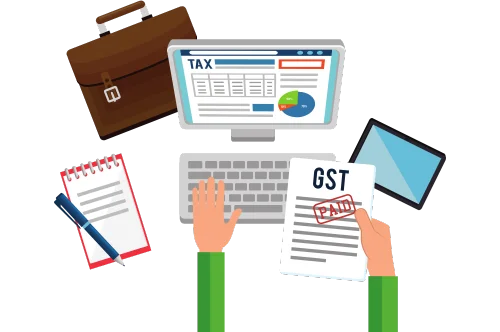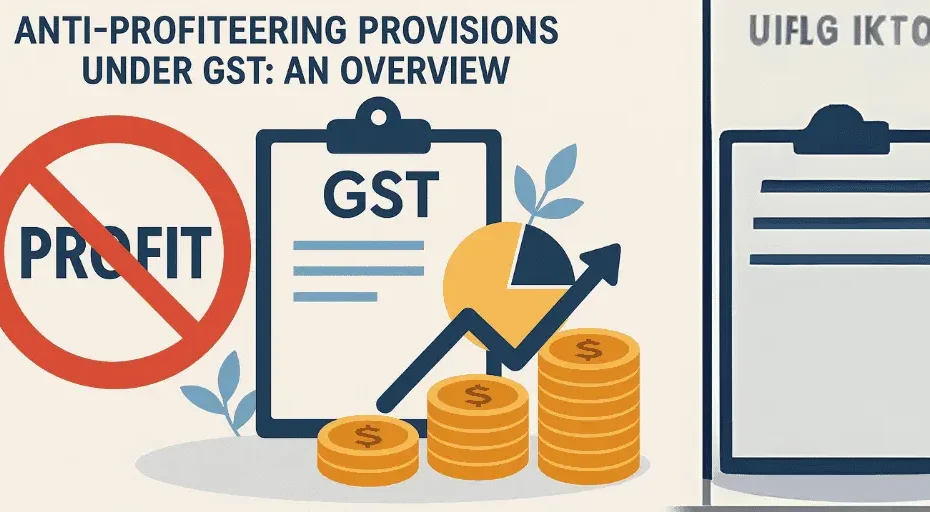Anti-Profiteering Provisions Under GST: An Overview
Introduction
When the Goods and Services Tax (GST) was introduced in India on July 1, 2017, it was hailed as a landmark tax reform aimed at unifying the country’s complex indirect tax system. The new tax regime intended to make compliance easier, reduce cascading taxes, and lower overall tax burdens on goods and services. However, one of the critical concerns raised by policymakers was whether businesses would actually pass on the benefits of reduced tax rates and increased input tax credits to consumers. This is where the concept of anti profiteering under GST emerged as a necessary safeguard.
In this blog, we delve into the anti-profiteering provisions under GST, exploring their objectives, framework, mechanisms, and their impact on businesses and consumers alike.
What Is Anti Profiteering Under GST?
The term “anti profiteering under GST” refers to the legal obligation imposed on businesses to pass on the benefits of any reduction in tax rates or availability of input tax credits to consumers by way of commensurate reduction in prices. Essentially, the government aims to ensure that GST benefits are not pocketed by businesses but are instead reflected in lower prices for end-users.
Section 171 of the Central Goods and Services Tax (CGST) Act, 2017 specifically deals with anti-profiteering measures. According to this provision, any reduction in the rate of tax or the benefit of input tax credit must be passed on to the recipient by way of a proportionate reduction in prices. Failure to do so amounts to profiteering and attracts penalties and other legal consequences.
Why Was Anti Profiteering Introduced?
Anti profiteering under GST was introduced primarily to protect consumers’ interests and maintain price stability in the aftermath of a major tax reform. When GST replaced a multitude of central and state taxes, it was expected that prices of many goods and services would decrease due to lower overall tax burdens and seamless input tax credit mechanisms.
However, without a monitoring system, there was a risk that businesses might not pass on these benefits, effectively increasing their profit margins at the expense of consumers. To address this, the government empowered the National Anti-Profiteering Authority (NAA) to enforce compliance with Section 171 and ensure fair pricing practices.
The Role of the National Anti-Profiteering Authority (NAA)
The NAA was established under the CGST Rules to oversee and enforce the anti-profiteering provisions. The authority is responsible for:
Determining whether a business has actually benefited from a reduction in tax rates or input tax credit.
Assessing whether these benefits have been passed on to consumers.
Ordering refunds to consumers, imposing penalties, and even canceling GST registrations in severe cases.
Anti profiteering under GST is implemented through a multi-tiered mechanism involving:
Standing Committees (at national level)
State-level Screening Committees
Directorate General of Anti-Profiteering (DGAP) for investigations
How Does the Anti-Profiteering Process Work?
When a consumer or stakeholder believes that a business has not passed on GST benefits, they can file a complaint with the relevant Screening Committee or directly to the Standing Committee. If the complaint has merit, the DGAP initiates a detailed investigation, examining invoices, cost sheets, tax returns, and other relevant documents.
Once the DGAP completes its investigation, the findings are submitted to the NAA, which reviews the report and delivers a final order. If the NAA concludes that the business is guilty of profiteering, it can order:
Reduction in prices
Return of the excess amount charged, along with interest
Imposition of penalties
Cancellation of GST registration (in extreme cases)
Impact of Anti Profiteering Under GST on Businesses
The anti-profiteering provisions under GST have been a subject of both praise and criticism. On the one hand, they ensure that businesses maintain transparency and pass on tax benefits to consumers. On the other, they have added a layer of compliance and uncertainty for businesses, especially in determining what constitutes a “commensurate” reduction in prices.
Many businesses, particularly in the FMCG and real estate sectors, have come under the scanner for allegedly not complying with anti profiteering under GST. The calculation of benefits and the methodology to determine price reductions can be complex, leading to litigation and compliance burdens.
Challenges in Implementation
While the intent behind anti profiteering under GST is commendable, its execution has faced several challenges:
Lack of Clear Methodology: Businesses often struggle to determine how much of the tax benefit should be passed on and how to calculate it accurately.
Subjectivity in Interpretation: The absence of standardized guidelines has led to subjective assessments and inconsistent rulings.
Legal Uncertainty: Multiple court cases have questioned the constitutionality and procedural fairness of anti-profiteering provisions.
Despite these issues, the anti-profiteering mechanism continues to play a vital role in ensuring the success of GST reforms.
Recent Developments and the Future of Anti-Profiteering
The National Anti-Profiteering Authority was initially set up for a two-year period but has been extended multiple times. As of now, the government has indicated plans to eventually subsume the functions of the NAA under the Competition Commission of India (CCI), signaling a shift toward a more institutional approach.
This move could streamline investigations and bring more robust legal backing to the enforcement of anti profiteering under GST. However, businesses must continue to maintain proper documentation, be transparent in pricing, and consult professionals to ensure compliance.
How Can Businesses Stay Compliant?
To avoid running afoul of anti-profiteering provisions under GST, businesses can adopt the following best practices:
Conduct periodic GST impact assessments.
Maintain detailed records of input tax credits and price changes.
Train finance and tax teams on GST compliance.
Engage with tax consultants to ensure alignment with the law.
Communicate transparently with customers about price changes.
Conclusion
Anti profiteering under GST is a critical pillar in India’s tax reform journey. While it has its share of complexities and criticisms, the core principle remains focused on consumer welfare and fair trade practices. By compelling businesses to pass on GST benefits, it promotes transparency, accountability, and trust in the system.
As the GST ecosystem evolves, so too will the mechanisms to enforce anti-profiteering. Businesses that prioritize compliance, embrace transparency, and stay informed about the legal landscape will be better positioned to thrive in the long run.
Whether you are a business owner, tax consultant, or consumer, understanding anti profiteering under GST is essential to navigating the modern tax environment responsibly and ethically.
Our GST Services

All E-commerce Tax services
E-commerce tax services help online sellers navigate GST registration, compliance, return filing, TCS management, tax planning, and audits, ensuring efficient tax management and legal compliance.

GST Filing
GST filing is the process of submitting tax returns to the government, detailing sales, purchases, and taxes paid or collected, ensuring compliance with GST laws.

GST Registration
GST registration is the process where businesses obtain a GSTIN from the government, allowing them to collect taxes, claim input tax credits, and comply with GST laws.





